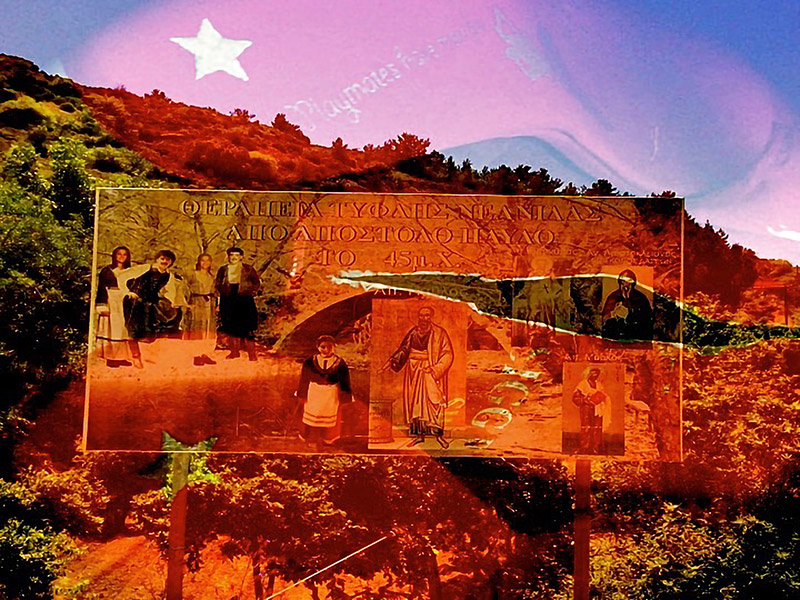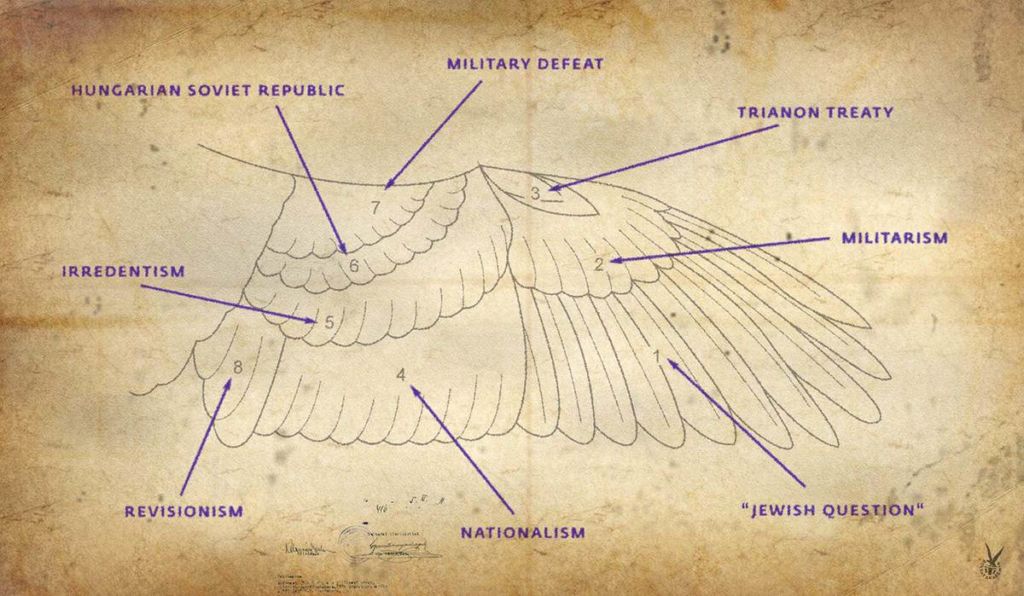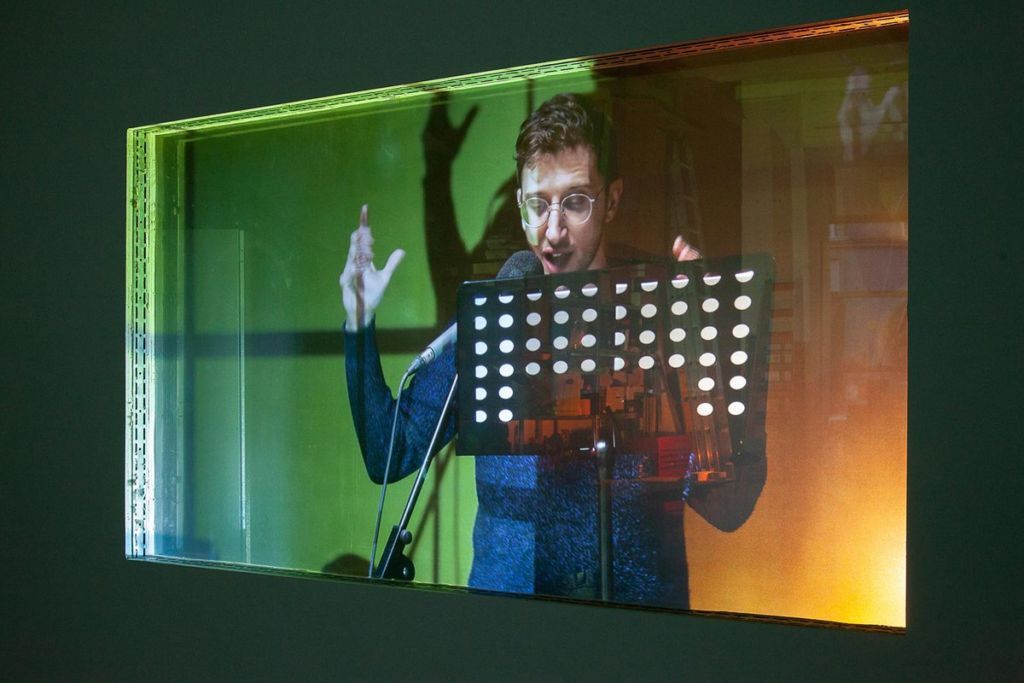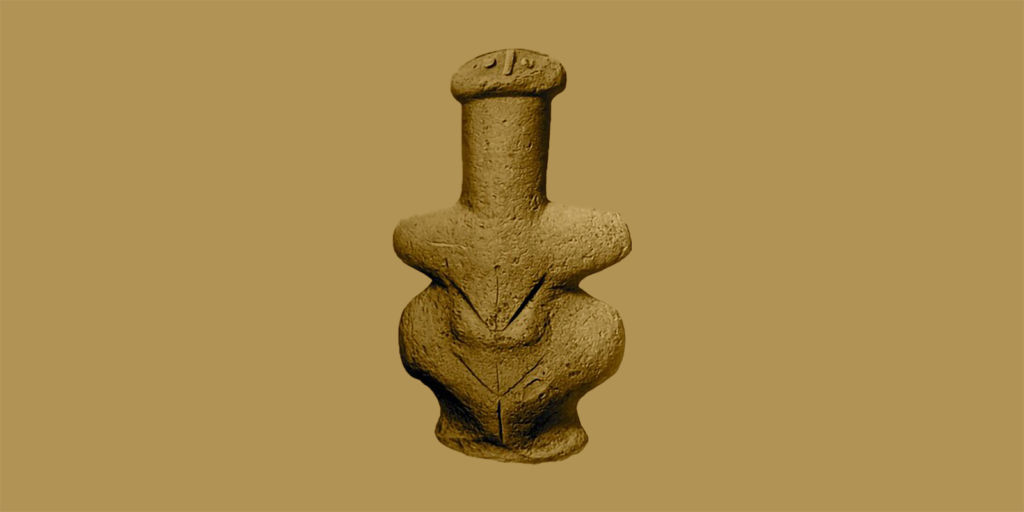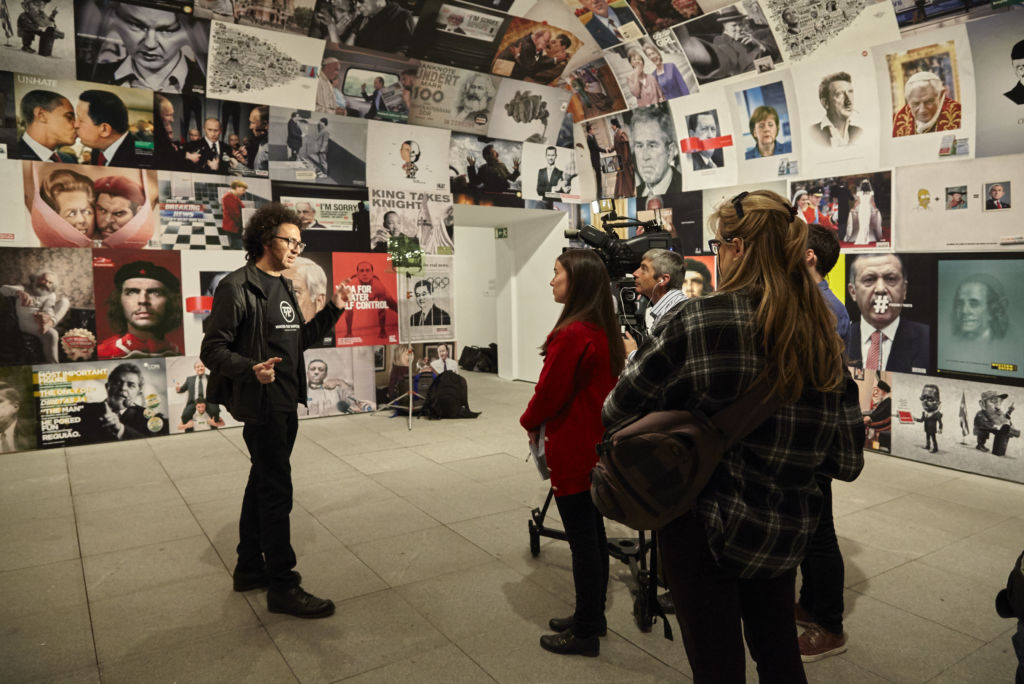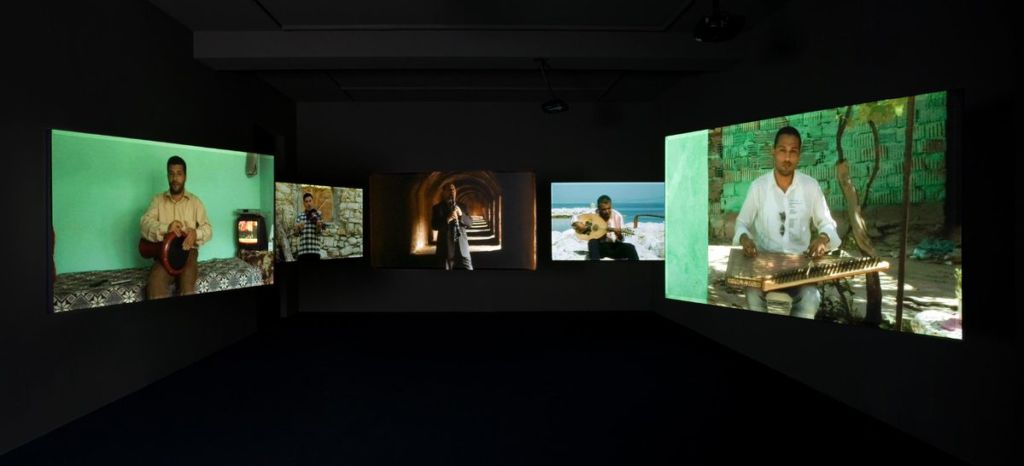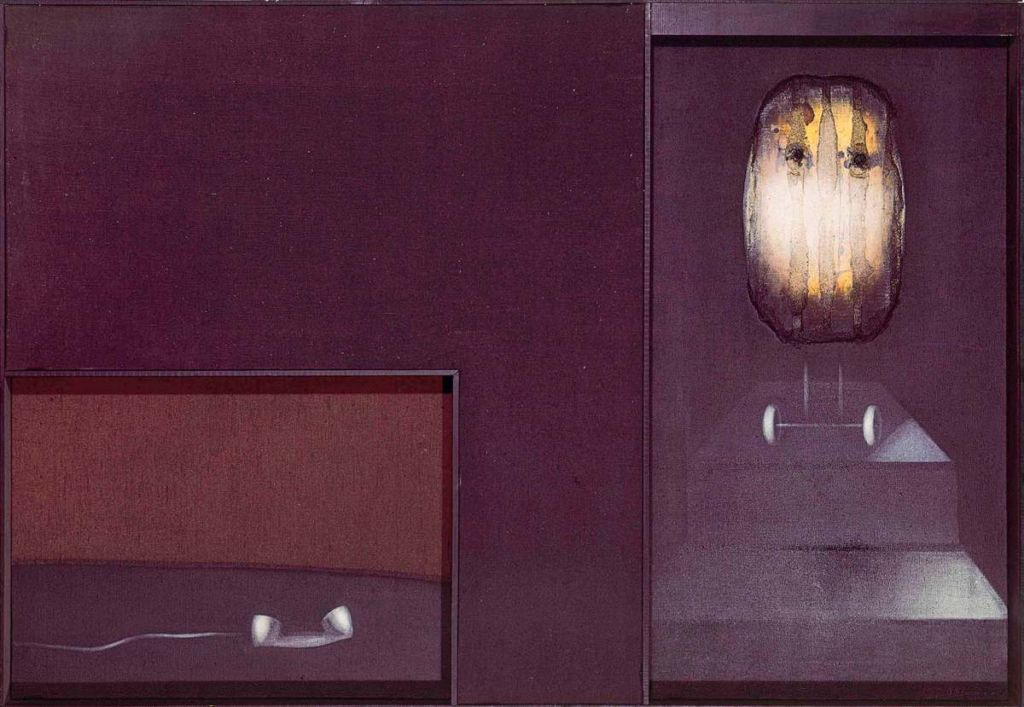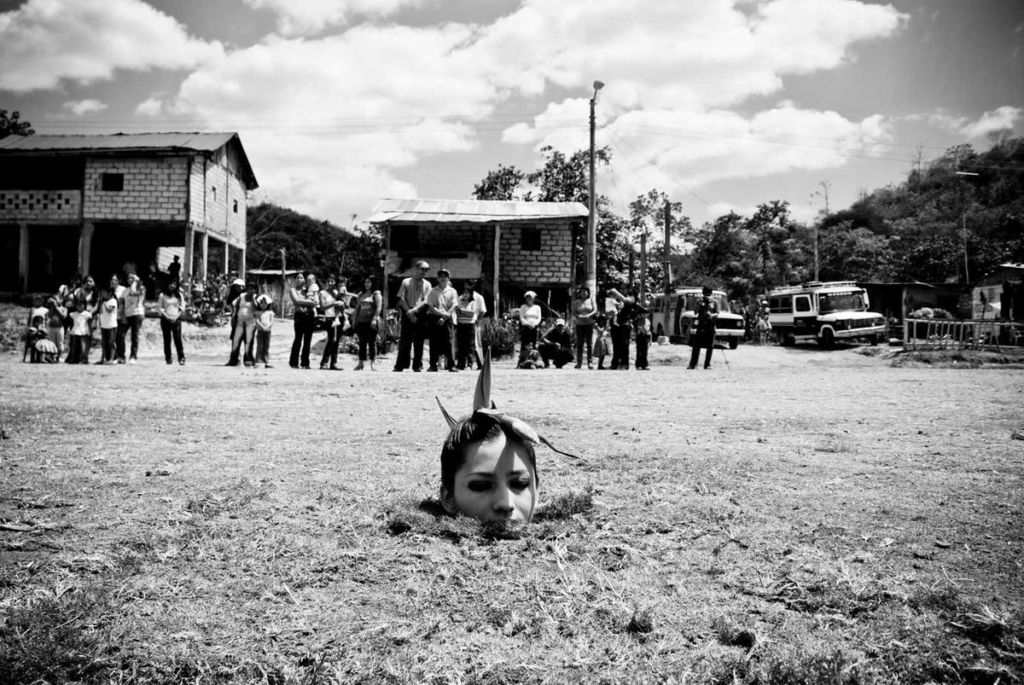Excavating Beyond the Male Gaze on Aphrodite’s Island #1 The Global Implications of the Cypriot Art of the Sacred Marriage
Investigation by Lisa Paul Streitfeld
Cyprus, often called Aphrodite’s island, is the birthplace of the Love Goddess, according to Greek mythology. There, in 1976, just two years after the island was split into a Greek part in the south and a Turkish part in the north, inscribing the division in its heart, an archaic statuette with male and female sexual signs was exhumed. Lisa Paul Streitfeld sees this as a sign that a higher unity, beyond gender, is in the making on this Mediterranean island.
She went to Cyprus, to Paphos, where her precinct is and a fragrant altar, and passed into her sweet-smelling temple.
—Homer 1
Ongoing political contentiousness on both sides of the border separating Turkish and Greek Cypriots veils the great mysteries hidden beneath the division of Aphrodite’s Island. The hieros gamos2 iconography, representative of the perfectly symmetrical orbit of Venus, the planet the ancient cultures worshipped as the Goddess of Love, was lost in the Greek appropriation of the indigenous Cypriot goddess.
With the Greeks controlling Cypriot archeology since the island’s independence, the cruciform artifacts3 unique to the island seem to be stylized representations of the distinct axis mundi4 geography of the place. The fact that these—and an even more crucial iconic discovery—have been secreted from transgender theorists (by virtue of the hierarchical structure of archeological exploration and interpretation) explains why continental philosopher Paul B. Preciado was destined to face the insurmountable boundary of the unknown forces guarding the male gaze theoretically smashed in An Apartment on Uranus: Chronicles of the Crossing,5 newly published in English this year.
These astonishing bi-sex artifacts are far from being heralded at the site of their discovery. Their implications for today’s global culture are too huge to be assimilated within the narrow Hellenic6 dictates of the local archeological research under the control of the Republic of Cyprus Department of Antiquities. Indeed, the politically drawn cultural division denies the island an authentic 21st-century resurrection as the essential site of reconciliation and transformation in Hellenic Studies.7
What could the patriarchy want to conceal by effectively keeping these magnificent icons underground and out of reach for gender theorists? This was my task—to find out the truth.
Crossing into the Third
Preciado’s high stakes adventure utilized his female body as the object/ive site of an experimental inward journey catalyzed in 2004. The objective was crossing genders by way of an addiction to testosterone chronicled in Testo Junkie.9 A decade later, a prestigious appointment to Documenta 14 as Curator of Public Programs required transporting this fluid gender identity over geographic borders, “transiting a space of gender recognition that is listed between masculine and feminine, between the masculine feminine and the feminine King, experiencing the position now called gender fluid.”10 The inner process “without masculine or feminine face, without fixed name and questionable passport”11 was externalized during the move to Athens, “a city hinged between East and West, a city of the crossing,”12 highlighted by severe economic collapse and political confrontation with Neoliberalism. From the Third space that Nietzsche referred to as Tertium quid,13 Preciado asserts: “with an appearance each time more masculine and a feminine identity document, I lost the privilege of social invisibility.”14
As an increasingly visible figure in the international art scene, Preciado’s transitioning body became an apt metaphor of a paradigm shift: “The fluidity of the successive incarnations clashed with the social resistance to accept the existence of a body outside the gender binary.”15 Preciado’s gender transition transcribed in literature is a contemporary journey reflecting the ancient Sumerian myth of Venus’s underworld passage via the inner and outer coniunctio (an alchemical term from the Latin for conjunction, or association, or affinity) with the Sun. The terra firma of “trans condition as a new form of Uranism”16 for the Third Sex was excavated nearly 900 kilometers east of Athens.
The irony of the Cyprus Problem is that these artifacts crystallize the ongoing struggle for a Cypriot unified identity following a history of invasions that did not end with the 1960 independence from British colonialism. And so, while the ancient artifact is covered up, the Third Space claimed by Preciado for the contemporary body is reflected in the UN-protected Buffer Zone zigzagging through the capital city of Nicosia.
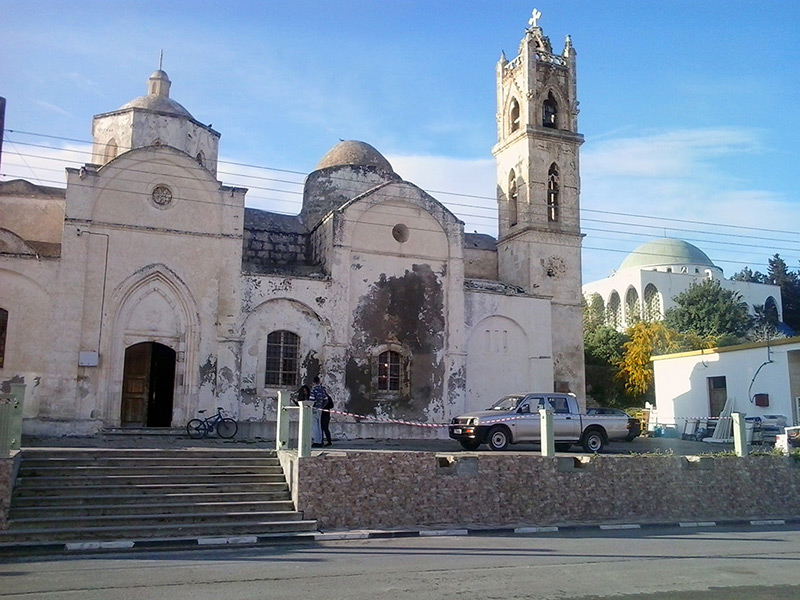
Dipkarpaz Main Street, photo © Lisa Streitfeld, 2017
The Buffer Zone became a place of refuge during my north to south border crossings through demonstrations taking place in a tense 2017 summer of reunification negotiations that went nowhere, as usual. The merrymaking of the demonstrators on the Greek side signaled a heart opening to the Green Line signifier on the Cypriot map representing the irresolvable tension between the Greek-speaking Republic of Cyprus and the Turkish Republic of Northern Cyprus (TRNC), recognized only by Turkey. The TRNC flag is based on the Turkish flag, with colors reversed and two horizontal red stripes added at the top and bottom.
Hidden from the border crossing in a maze of haystacks, silent witnesses to the armed struggle resulting in the August 14, 1974 Turkish invasion, I slept under Venus meeting up with the Crescent Moon17 — a crucial marker in the ancient mythological journey of descent and return of Inanna, self-declared Queen of Heaven and Earth, by way of her magnetic bi-sex dynamism. The Sumerian myth, the Descent of Inanna (1900-1600 BCE),18 established a narrative for the disappearance of Venus into the in-between: the interior and exterior conjunction with the Sun on either side of the transition between the two faces of helical rise at dawn and dusk. This symbol—one of the eight stops on the journey—will be the first sign I see at dawn looking North, on the TRNC flag and Turkish flag flying over the border station.
Looking south, the once magnificent Ledra Palace Hotel is where the UN peacekeeping force resides across from the sleek modern Home of Cooperation. Beyond the Greek border post is the Golden Triangle of the island’s colonial archeological heritage—the Cyprus Museum, Greek Embassy and Cyprus American Archeological Research Institute (CAARI) offering funding, a library and accommodations to foreign archeologists working in Cyprus. All these institutions are united by willful ignorance about the symbol on the Turkish flag: the ancient worship of the cyclical journey of the Goddess to the Underworld and Return.19
At dawn, a flock of shrieking crows creates an ominous whirlpool over my head. Mesmerized, I watch them fly to the castle and make a perfect still line on the roof edge—and time stops. “Crows!” exclaimed a friend when I text her from the Home of Cooperation café, “they are the messengers!” I was at loss to understand what they were telling me—until a crucial disclosure at midnight before returning to the haystacks to retrieve my backpack and exit the Turkish border. There, a waiting cab took me full circle back to Ercan International Airport to catch a flight to Istanbul to view the grandiose statue of a naked Venus with a penis in the local Museum of Archeology.
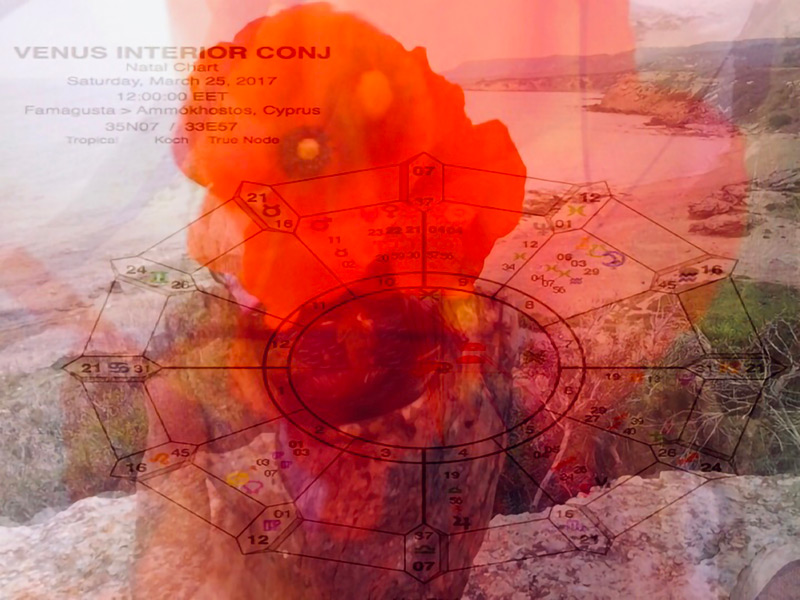
Lisa Streitfeld, Venus Interior Conjunction Performance Still, digital astro collage, 2017
Surmounting Duality
“Turkish Occupied Area” is stamped in barbed wire markings on the tourist maps issued in the south. This warning about crossing boundaries may well be the signal of a forbidden sexuality stamped into mountains visible from both sides of the divided capital city.
On my third trip to Cyprus, when I finally made it over that forbidden border marked by this universal signifier, I needed a new language, a new currency, a new sensibility to even understand the kundalini drenched videos entertaining my bus rides. Nicosia has two complementary opposing faces—one facing East and the other West—just like Venus as Morning and Evening Star.20
I booked a room for a week within the Venetian walls of Famagusta with its scattered cannonballs reminiscent of an earlier Turkish invasion. After a week, I befriended a Libyan student who took me to Cyprus House, the colonial police station resurrected as a nightclub and restaurant. The owner, Hasan, rented me the former sheriff’s bedroom with use of the outer jail cells transformed into the club’s toilettes. This became my base in the northern part of the island.
The destination of my journey north was Rizokarpaso/Dipkarpaz—the sleepy village legendary for having Turkish and Greek cafes face off on the main street. I set up my tent in the alley between a functioning old orthodox church and contemporary mosque. Exploring the small outdoor tourist market, I purchased supplies for my journey—dry bread and local honey along with a miniature vase with Botticelli’s image of the naked Venus in the half shell.
To make the circle around the northern end of Cyprus, a long finger pointing between Turkey and Syria, I hitchhiked along the beach road through Karpaz National Park. After three days, I arrived at the Apostolos Andreas Monastery with its legend of healing waters sacred to both Greek and Turkish Cypriots. Behind the decayed building was a campground where I set up my tent. I was awoken by a stampede of the most famous inhabitants of the Karpas—the wild donkeys.
Mustafa, the youngest of the surviving Karpas fishermen, invited me for breakfast in the cement house of Ishmael, the oldest one. We set out in a hike down the dirt road to the tip of the cape and reached the massive rock formation brandishing the flags of Turkey and the Republic of Northern Cyprus. He helped me climb up the side, then guided me into the opening of Aphrodite’s Cave.21
Perched between light and total darkness, I had an Aha moment where my conscious pursuit of the Morning Star merged with the unconscious realm of the Evening Star under the symbol of this ancient journey on the flag waving above. The mouth of the cave exudes the scent of the sexual, the vulva of the Great Goddess as the portal to the unknown passing through the copper-rich mountains to the sea.
Transgender Cult
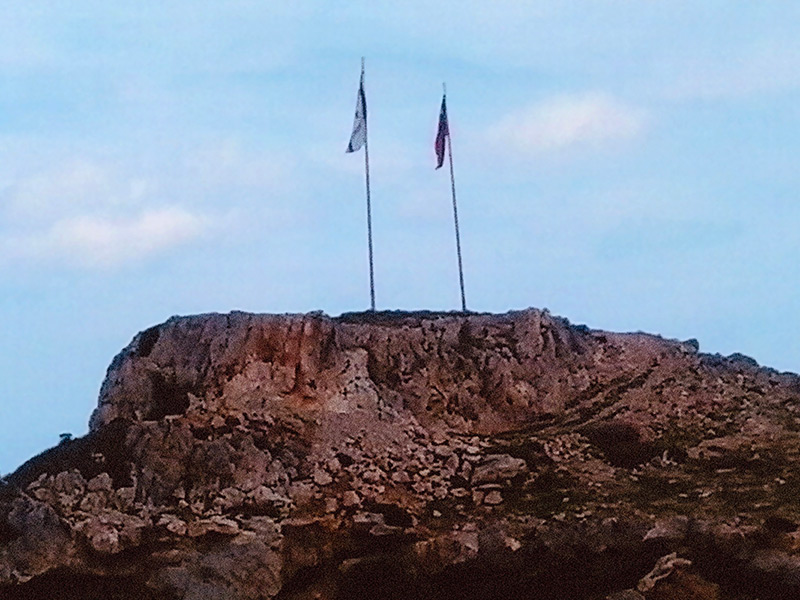
Turkish and Republic of North Cyprus Flags over Aphrodite’s Cave Entrance, photo © Lisa Streitfeld, 2017
Devolving representations of the ancient Love Goddess in the Cypriot Museum make visible her passage from self-contained and proactive to dispersive and reactive. The Cypriot splendor revealing the Near Eastern influence of idiosyncrasies via sovereignty, reflected in the distinct identity of Inanna, shifted into the uniformity of the classical period of Alexander’s conquest. The subsequent uniform draped Venus of the Hellenic period has run its timeless course as the ultimate object of the male gaze.
The gender equality, imbedded in the hieros gamos iconography, fell into decline after the Golden Age wealth made Cyprus a target for patriarchal conquest. As the Bronze Age regional collapse around 1200 BC subsided into the Iron Age, the lingering trace of the “third sex,” as a signifier of the hieros gamos, was an androgynous beauty “born both man and woman, who used his male attributes with Aphrodite and his female attributes with Apollo.”22 The Adonis cult is, therefore, a “rite of passage” stripping the male gaze of the chthonic power of the Goddess, the power I experienced sitting at the mouth of her vulva.
The rosette, a symbol of fertility derived from the Near Eastern Goddess, was worn by both genders in Cyprus.23 This shared-between-gender-polarities symbol indicates Cyprus as the crossing point from the matriarchy of the early Anatolian immigration to the patriarchy of the Mycenaean immigration at the end of the Bronze Age.
The recurring myths of the dying and resurrected deity signify the archetype at the zodiacal changing of the ages. In the Aries Age myth, Tammuz resurrecting alone as the son of Ishtar, the Warrior Goddess, replaces Inanna who shared the underworld journey to the mysteries with her consort, Dumuzi. After Inanna returns from the Underworld to her city of Uruk to discover her husband has usurped the throne, she sends him down to the Underworld in her place. The resolution of the tension is the loving sister who agrees to share the chthonic experience with her brother.
The Uranian Third Sex
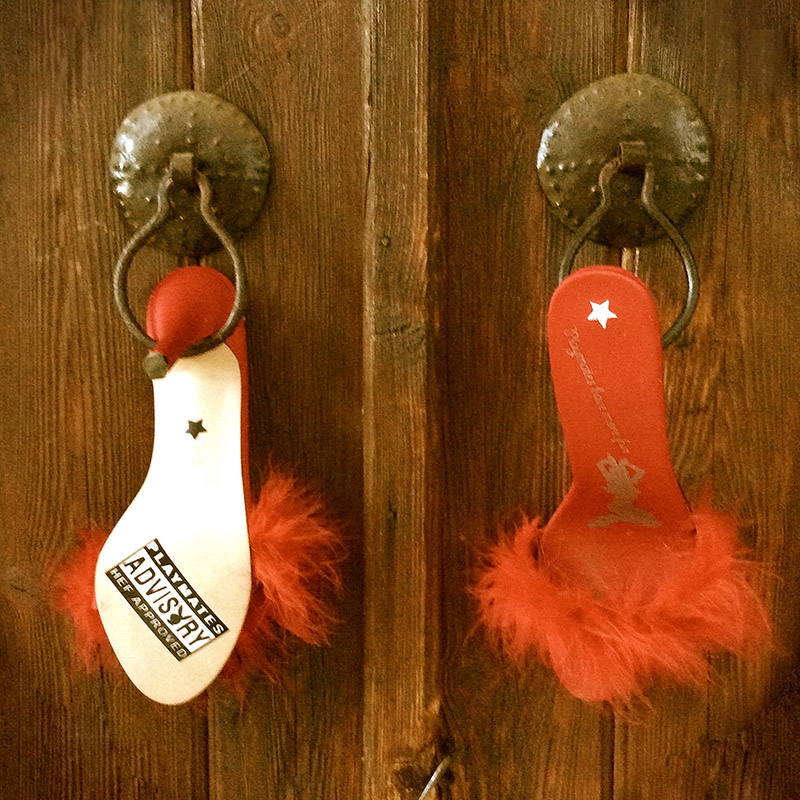
Lisa Streitfeld, Church Door, Kalio Chorio
I am not a man. I am not a woman. I am not heterosexual. I am not homosexual. I am not bisexual. I am a dissident of the gender-sex binary system. I am the multiplicity of the cosmos trapped in a binary political and epistemological system, shouting in front of you. I am a Uranist confined inside the limits of technoscientific capitalism.
—Paul Preciado 24
The sister in the Sumerian myth represents the “third sex” revived by Preciado. Through the sister’s mediation, Dumuzi agrees to surrender to his fate, thereby fulfilling his destiny as a partner in the hieros gamos. The gender balance in which the lovers’ engendered switch from male body to female body demonstrates an equality of power between masculine and feminine. In the later myths of the dying and resurgent god characterizing the subsequent ages, the hieros gamos iconography eclipses the all-powerful body of the Mother Goddess.
Preciado speaks of colonialism imposing gender binaries as instruments of control; in Cyprus, this was literal. The holistic bi-sexness25 encountered in Cyprus was a too powerful, and simply too erotic, representation of the Love Goddess. Her identity was appropriated by way of replacing her adorned and evolving image with the stasis of a homogenous naked woman born out of the genitals of Uranus thrown into the foam. The stagnant form of the male gaze, preventing any exchange of gender polarity, characterizes the shape-shifting origin of Aphrodite. Ironically, this limited view determining the value of beauty through the Greek philosophical pursuit of the classical perfection of human proportion remains ignorant of the pure form of the pentagram orbit of Venus formed by eight years of helical risings.
The cracks in the Greek strategy to eclipse the enigmatic gender-shifting self-containment of the ancient Venus is traced through the Syrian heredity of the legendary figure exploiting the mineral wealth of the island. King Kinyras presided over the Golden Age of Cyprus (1700 BC) with his bride, Kypris. Partnering with the entrepreneur from the east, the Cypriot Love Goddess is no longer an invisible primordial being to be worshipped for her penetrating cosmic power. She is now shiny substance, a mineral to be exploited for material gain. Indeed, copper is the origin of the island’s name26 reflecting the source of the wealth fueling the Cypriot Golden Age. While mining copper was halted due to the 1974 cease-fire demarcation, the island has barely begun to mine the foreign exchange potential of its hidden tourist trek: from Aphrodite’s Rock jutting from the sea near her sanctuary in Kouklia to her beach and trail crossing with Adonis outside her bath. Not to mention her hidden cave on the eastern tip of the island!
With gender transiting switched to a phallic body, the energy of the centralizing universal icon of the hieros gamos, unearthed in the numerous cruciform figures of the island, was too strong to repress. There had to be a myth explaining the punishment for engaging in the ancient religious practice of the sacred marriage; therefore, Aphrodite’s lover was made into a voyeur of the naked Artemis and sacrificed for bringing the underworld mystery of feminine beauty into the daylight. Aphrodite set out to find his body. In this Cypriot version of Isis seeking the body parts of Osiris, we now understand why the penis of the earlier Egyptian myth was never uncovered: it was attached to the bi-sex Venus of an earlier—and later—epoch!
Reviving the Holistic Venus for Western Philosophy
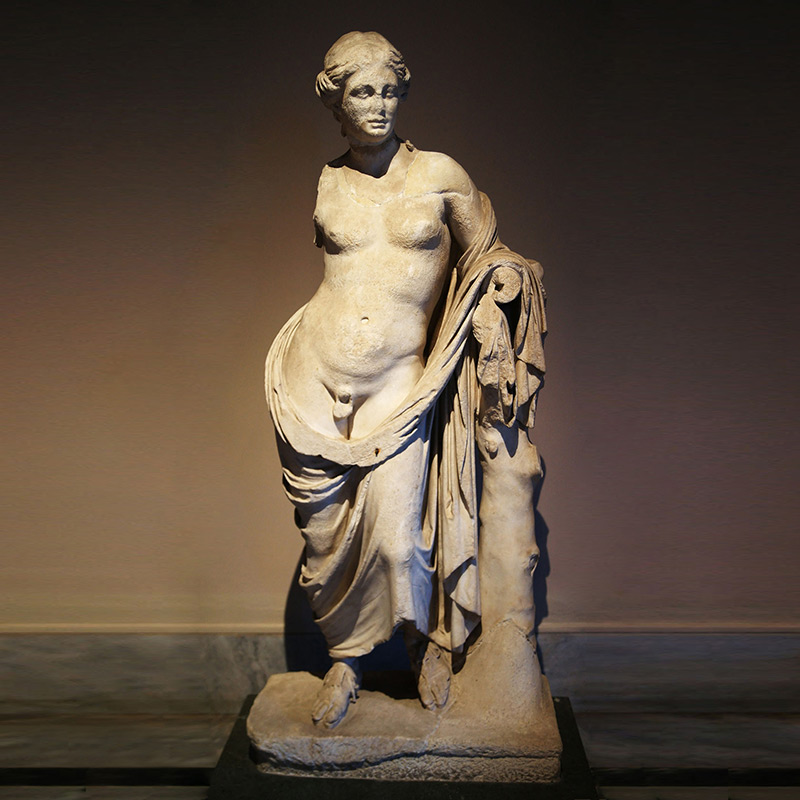
Hermaphroditus, 3rd Century BC, Istanbul Archaeological Museums
For all her love of erotic adventure, Venus stripped of the dual face does not seek the pleasure of the proactivity within through her own agency. The Surrealist route Preciado accidentally discovered through his 2004 experiment with testosterone addiction resulted in a feminist literary tour de force resurrecting the Adonis transgender cult as a contemporary praxis by way of the Third object—a black 8 ½ inch dildo christened Jimi (Hendrix):
Power girls—orgasms—adrenaline—extravagance—social recognition—success—glucose—family acceptance—inclusion—strength—tension—camaraderie—financial ascent. In the space of six months, these are the political surplus values obtained by a cis-female who ingests testosterone.
In Indian religious tradition imported from Mesopotamia via Iran, the “female pubic triangle was the focus of divine energy,” Riane Eisler wrote in Sacred Pleasure, “(…) associated with what is called kundalini energy, which, when awakened through the pleasures of sex, rises through the body to bring about a state of ecstatic bliss.”28
Therein lies the Cypriot paradox at the heart of my discovery. Excavating, through the island’s topography, the gender duality which was the hallmark of the dynamic self-contained eroticism of the ancient Venus, produced a series of synchronicities transforming my linear pursuit of chronological time, via the Cypriot artifact, into the cyclical time of kairos. The erotic link traced to my discovery of Preciado’s early writing (deconstructing the Playboy signifier)29 was an authentic cherry red bunny slipper discovered in a Berlin consignment shop just prior to my second visit to Cyprus. This modern erotic artifact was tucked into my bag as “L’Objet Spéculatif: Red Shoes Cyprus,”30 uncovering the erotic connections between ancient artifacts and a boundary-smashing Cypriot contemporary art practice discussed in Part II of this article.
The sacred marriage of image and text, embodied in these Cypriot discoveries separated by 5,000 years of history, created a sentient link to the discovery of human writing—the vulva (cuneas) shaped wedge expressing in terra cotta an unsurpassed unity of technique with content. The unheralded display of locally excavated cuneiform in the Cyprus Museum reveals the secret of the Aphrodite coverup: the dynamic quest for the embodiment of the ancient icon of the hieros gamos sacrificed to the male gaze.
Cover: Lisa Streitfeld, Red Shoes with St. Paul Billboard, Republic of Cyprus, digital collage, 2015
1.Homeric Hymn to Aphrodite 5.58 – 60, Hugh G. Evelyn-White, Ed., on www.perseustufts.edu, accessed August 5, 2020.
2.Hieros gamos (Greek for sacred marriage) was named the 21st century icon by the 20th century prophets Wolfgang Pauli and Carl Jung (Remo Roth, Return of the World Soul, C.G. Jung and the Challenge of Psychophysical vol. I & II, (Pari, Italy: Pari Press, 2012)). Hieros gamos has been at the center of Dr. Lisa Streitfeld’s art theory from two decades, tracked around the globe in her (R)evolution series for Huffington Post Arts (2010-2017) after delivering her paper, “Overcoming the Heisenberg Principle: Art Theory Arising Out of Wolfgang Pauli’s Collapsed Wave,” at the 2011 International Conference on the Arts in Society at the Berlin-Brandenburg Academy of Sciences and Humanities.
3.These Chalcolithic (Copper Age) cruciform figures (4000/3900 – 2500/2400 B.C.) have phallic heads, outstretched arms forming a cross with the torso with lines between the legs indicating the female vulva and a miniature replica of itself hung around the neck. Originally used for freestanding and jewelry for both funerary and domestic purposes, the image is on the Cypriot Euro while replicas are sold on the island as souvenir charms and key chains.
4.Axis mundi (world axis/cosmic axis/World Tree) is the figurative connection between heaven and earth honored in indigenous cultures as the place of death and rebirth.
5.Paul B. Preciado, An Apartment on Uranus: Chronicles of the Crossing (Cambridge, MA: MIT Press, 2020).
6.Hellenic is a term relating to Greece—507 BCE (the date of the first democracy in Athens) to the death of Alexander the Great in 323 BCE. In Cypriot archeology, the Hellenic period (312-58 BCE) begins a decade after Alexander’s liberation of the island from the Persians.
7.Greek studies are split into two groups, European/Aryan and Afro-Egyptian/Semitic. See Martin Bernal, Black Athena: The Afroasiatic Roots of Classical Civilization, Vol. I, The Fabrication of Ancient Greece 1785- 1985 (New Brunswick, NJ: Rutger’s University Press, 1987).
8.The Third was declared a Badiosian Event in the Saas-Fee Media Lab in Huffington Post Arts, September 9, 2014. Also see Lisa Streitfeld, Hermeneutics of New Modernism (New York/Leipzig: Atropos, 2014), 156-159.
9.Beatriz Preciado, Testo Junkie: Sex, Drugs, and Biopolitics in The Pharmacopornographic Era, Trans. Bruce Benderson (New York: Feminist Press, 2013).
10.Paul B. Preciado, An Apartment on Uranus: Chronicles of the Crossing (Barcelona: Editorial Enagrama, 2019), 29.
11.Ibid., 34.
12.Ibid.
13.Lou Andreas-Salomé, Nietzsche, Trans. & Ed. Siegfried Mandel (Champaign: University of Illinois Press, 2001), lxii. Mandel writes: “Nietzsche described himself as a Tertium quid, a disembodied third person or entity. (…) for Nietzsche the phrase is a metaphorical description of an introduced mental and psychic condition, a necessity for rising above inherited, conditioned and acquired tastes.”
14.P. B. Preciado, An Apartment on Uranus: Chronicles of the Crossing, Op. Cit., 33.
15.Ibid., 29.
16.Extracted from Preciado’s quote on the MIT Press website
17.In Dr. Lisa Streitfeld’s art praxis, this data has been pioneered as a technology for feminine evolution known as The Science of Magic.
18.Inanna, Queen of Heaven and Earth: Her Stories and Hymns from Sumer, Trans. & Ed. Dianne Wolkstein & Samuel Noah Kramer (San Francisco: Harper Perennial, 1983), 88.
19.The Iranian-American philosopher Jason Reza Jorjani traces the Muslim appropriation of the Crescent Moon with the Star from the Mythric worshipping House of Karen, which had the symbol as their standard. “(…) the star in this symbol is in fact not a star at all. It is the planet Venus, which in its guise as the morning star is referred to as Lucifer.” Jason Reza Jorjani, Iranian Leviathan: A Monumental History of Mithra’s Abode (London: Arktos, 2019), 311-312.
20.In their conception of Aphrodite, the Greeks cut Venus from her bi-sex revealed by orbit, naming the eastern and western appearances of Venus as two brothers, Phosphorus (Morning Star) and Hesperus (Evening Star).
21.I found no archival evidence regarding Aphrodite’s Cave on either side of the island. It has simply been local legend, or perhaps my guide made it up. I only know my bodily experience.
22.Photius, Bibliotheca 190, quoting Ptolemaios Hephaisrion on: remacle.org Accessed August 2, 2020.
23.“(…) rosettes are connected, in particular, with statues of men wearing a broad band around the head, a bodice, and shorts, all of which may be decorated with rosettes.” Lone Wriedt Sorensen “Cypriot Women of the Archaic Period: Evidence from Sculpture,” in Engendering Aphrodite (Boston: The American School of Oriental Research, 2002), 121.
24.This Preciado quote is on the MIT Press website
25.Mycenaeans had trading relations with this area from late 15th to 13th centuries B.C., Settling on the island when their empire collapsed in 1200 B.C. See Jacqueline Karageorghis, Kypris, The Aphrodite of Cyprus: Ancient Sources and Archeological Evidence (Nicosia: A.G. Leventis Foundation, 2015), 19.
26.Aeria was an ancient name for Cyprus, the name aes or aeris relating to the Latin word for copper. See Karageorghis, Ibid., 14.
27.Paul B Preciado, 2013
28.Riane Eisler, Sacred Pleasure: Sex, Myth, and the Politics of the Body (New York: Harper Collins Publishers e-book, 1996), 37.
29.Paul B. Preciado, Pornotopia: An Essay on Playboy’s Architecture and Biopolitics (New York: Zone Books, 2014).
30.More about this on objet speculatif
